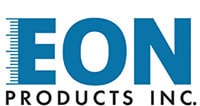Selecting the Right Type of Passive Groundwater Sampling Equipment
In environmental monitoring, selecting the best sampling equipment is crucial to your project’s success. If you are considering improving the sampling efficiency of your monitoring program with passive samplers, it is important to ensure the type of sampler you choose aligns with the needs of your project and the preferences of your team in the field.
Passive groundwater sampling, known for its balance of cost-effectiveness and reliability, presents a range of equipment choices suited to different projects, goals, and preferences in the field. Here, we dive into making that crucial choice, ensuring it’s not just about avoiding problems but setting the course for success.
Understanding Passive Groundwater Sampling
Passive groundwater sampling is a technique that collects groundwater samples without the need for purging prior to sampling. A passive sampler captures a representative sample within a specific interval of the monitoring well screen, avoiding the aerated or stagnant water at the top of the screen or in the casing. This method utilizes the natural flow of groundwater from the surrounding aquifer to refresh the monitoring well, allowing for an accurate representation of conditions.
Passive Diffusive Samplers (Single Membrane)
Functionality: Passive Diffusion Samplers collect a water sample containing contaminant molecules that have diffused through the pores of a semipermeable membrane filled with deionized water. Single membrane samplers are made from one, solid membrane and are used to sample for volatile organic compounds (VOCs).
Strengths: Their simple design makes them cost-effective and easy to deploy. They are particularly efficient for monitoring VOCs, offering high accuracy. Diffusion samplers offer a time weighted average of the last few days of groundwater flow, allowing for a more wholistic view of the aquifer’s characteristics.
Ideal Use Case: These samplers are best suited for long-term monitoring of VOCs in environments with stable groundwater conditions, where their precision and simplicity are most advantageous.
Dual Membrane Passive Diffusion Samplers
Functionality: Dual Membrane Passive Diffusion Samplers (sometimes called DMPDB’s) operate like standard diffusion samplers, but they are equipped with two semi-permeable membranes of different porosity, allowing for diffusion of different types of compounds.
Strengths: DMPDB’s offer a similar, time weighted average of the groundwater that provides a broader characterization of the aquifer. Due to their multiple membranes, they are especially effective for detecting a wide range of contaminants, including semi-volatile organic compounds (SVOCs), Metals and PFAS.
Ideal Use Case: These samplers are ideal for complex environmental sites with a diverse range of contaminants, where enhanced detection capabilities are required.
HydraSleeve No-Purge Samplers
Functionality: HydraSleeve No-Purge Samplers are designed for the efficient collection of discrete water column samples without the need for purging, optimizing the sampling process.
Strengths: Since HydraSleeves capture anything that is in the water within the sampling interval, they can be used to sample any contaminant found in groundwater. HydraSleeves are also the best passive sampler to maximize sample volume within a monitoring well.
Ideal Use Case: These samplers are particularly suitable on projects where the benefits of passive sampling are desired, but the sampling objectives require a snapshot in time, similar to a pumped or bailed sample. HydraSleeves are also the best passive sampler to use when 1 liter or more of volume is required per sample.
Comparing the Three Types of Passive Samplers: A Decision-Making Guide
When choosing between these types of passive samplers, several factors come into play:
Contaminant Profile: Understanding the types of contaminants present is crucial. For VOCs, traditional passive diffusion samplers are effective, while Dual Membrane samplers and HydraSleeves are necessary if you are sampling for more than VOC’s.
Volume Requirements: Consider the contaminants of concern and the volume your lab requires for each sample. If more than 1 liter is required per sample, HydraSleeves are generally recommended.
Project Team Preference: At most sites, the HydraSleeve™ or one of EON’s diffusion samplers will be able to align with your monitoring objectives. In these cases where more than one type of sampler is effective, it can come down to the team’s preference in equipment. Is the field team more familiar with one type of sampler?
EON Products: Catering to Diverse Monitoring Needs
At EON Products, we understand the diversity of groundwater monitoring projects and offer a range of passive groundwater sampling equipment to meet these varied needs.
Customized Solutions: We assist in selecting the most suitable sampler based on your project’s specific requirements.
Quality Assurance: Our products are designed to ensure accurate and reliable sampling results.
Expert Support: Our team provides ongoing support and advice, ensuring successful deployment and sampling.
Conclusion
Choosing the right type of passive groundwater sampling equipment is a critical step in ensuring the success of your monitoring projects. By understanding the distinct features and benefits of the different types of passive diffusive samplers and HydraSleeve No-Purge Samplers, you can make an informed decision.
Book a free consultation to learn more about this equipment and how it can help you on your next project.
Frequently Asked Questions
The environmental impacts of using passive samplers compared to traditional sampling methods are quite notable. Passive samplers, by design, reduce the disturbance to the groundwater environment, minimizing the risk of cross-contamination and preserving the integrity of the site. This contrasts with traditional methods like pump-and-purge, which can disturb the natural state of the groundwater and generate significant volumes of wastewater. Additionally, passive samplers are often more energy-efficient and require less field time and resources, leading to a smaller environmental footprint. These advantages make passive samplers a more environmentally sensitive choice for groundwater monitoring.
